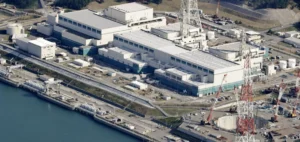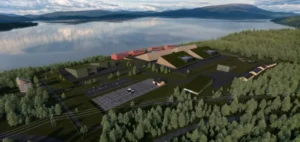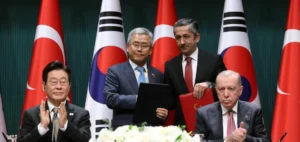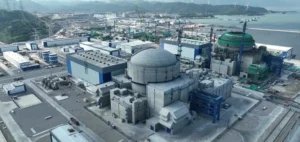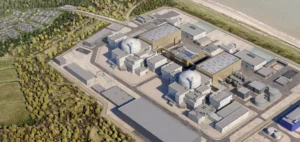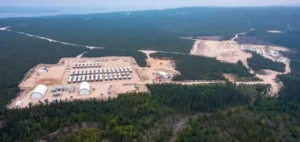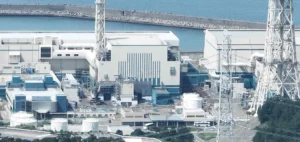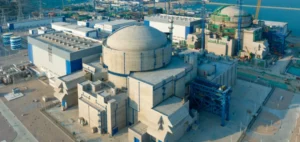China National Nuclear Corporation (CNNC) recently announced the successful installation of the containment dome on the Unit 4 reactor at the Xudabao nuclear power plant. This operation, carried out in a single stage, represents a major step forward in the construction of this power plant in Liaoning province. The dome, a hemispherical structure 44 metres in diameter and 22 metres high, was erected on top of the containment building in just over three and a half hours. The process included the entire steel lining structure and support cage, as well as all penetrations, reinforcing plates, internal steel structures, equipment supports, spray systems, lighting systems, hydrogen removal devices, heat exchangers, and other essential equipment, with a total weight of 655 tonnes.
One-Step Lifting Technology
The one-step lifting technique used to install the dome on unit 4 has already been successfully employed on unit 3 of the same plant. According to Alexei Bannik, Vice President for Projects in China and Advanced Projects at JSC Atomstroyexport, this method considerably simplifies the process and reduces the time needed for this critical operation. The agreements signed between Russia and China in June 2018 provided for the construction of two VVER-1200 reactors at the Xudabao site, also known as Xudapu. These reactors, designed by Rosatom, are intended to boost China ‘s energy capacity while contributing to its carbon emission reduction targets.
Project progress
Construction of unit 3 began in July 2021, followed by unit 4 in May 2022. The dome was installed on unit 3 in July last year, marking the first use of this single-stage lifting technique. The two units are scheduled to come on stream in 2027 and 2028 respectively, and together are expected to generate over 18 billion kWh of electricity per year, equivalent to a saving of around 6.4 million tonnes of coal and a reduction in carbon dioxide emissions of around 18.9 million tonnes per year.
Futuristic perspectives
The Xudabao site will also see the construction of two CAP1000 reactors, the Chinese version of Westinghouse’s AP1000, for units 1 and 2. Construction of Unit 1 began in November 2023, marking a milestone in the expansion of China’s nuclear capabilities. The Xudabao plant is owned by Liaoning Nuclear Power Company Limited, a joint venture between CNNC (70%), Datang International Power Generation Company (20%) and State Development and Investment Corporation (10%). The success of the Unit 4 dome installation bears witness to the commitment and efficiency of the teams involved, as well as to China’s technological progress in the nuclear field. The continuation of this key national energy project will make a significant contribution to China’s efforts to produce cleaner, more sustainable energy.




